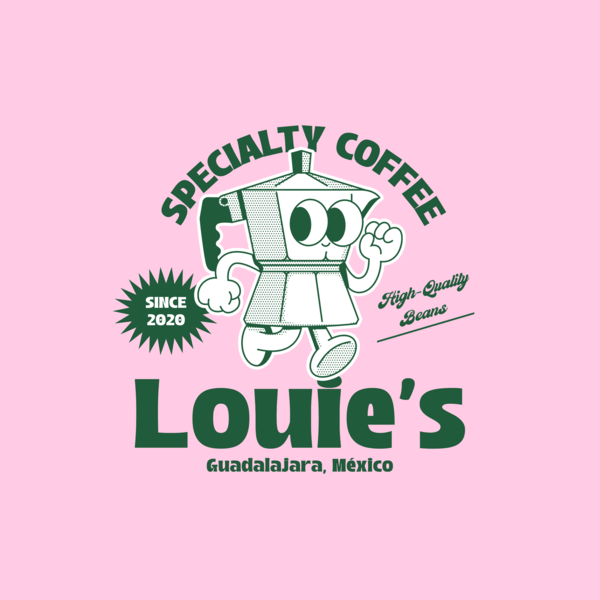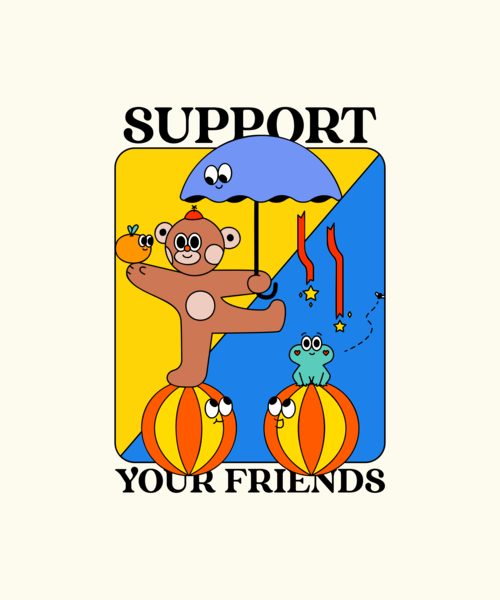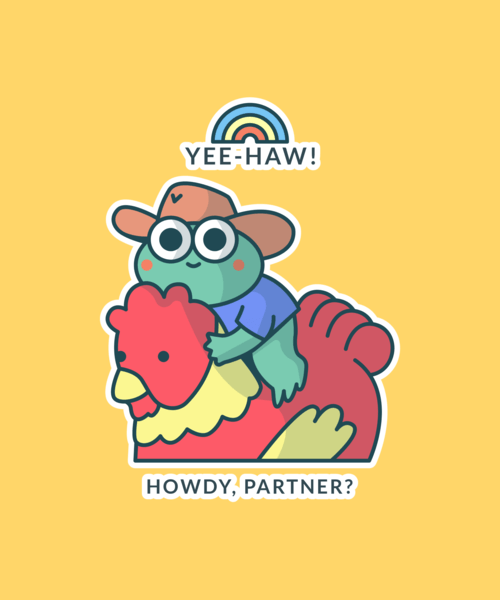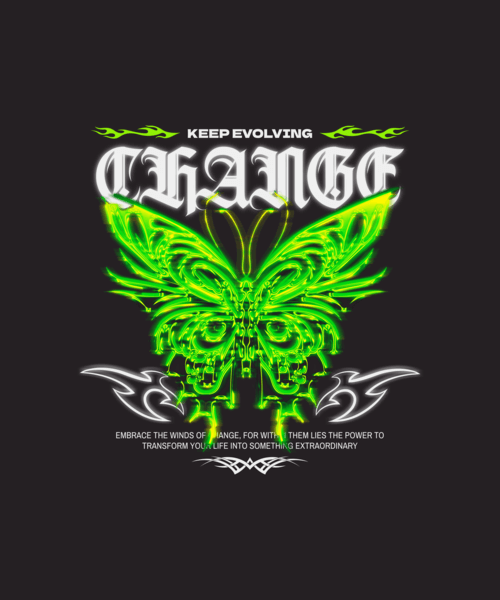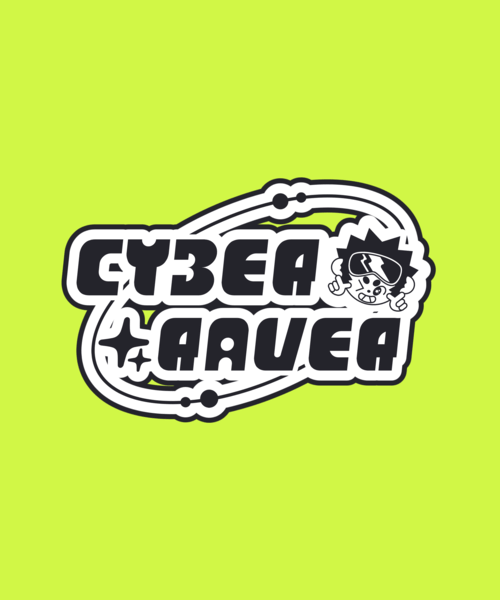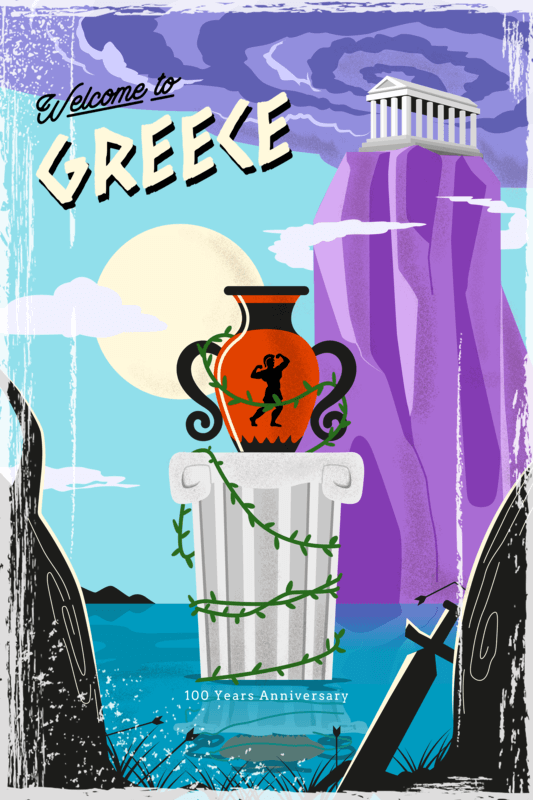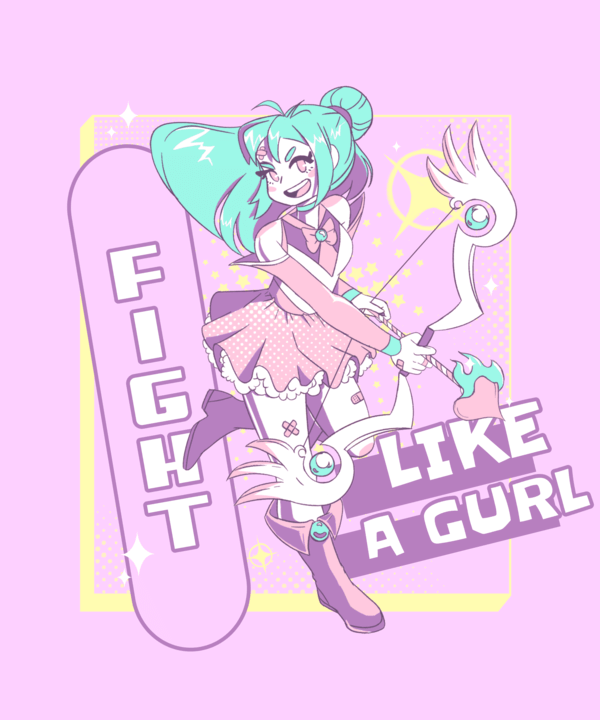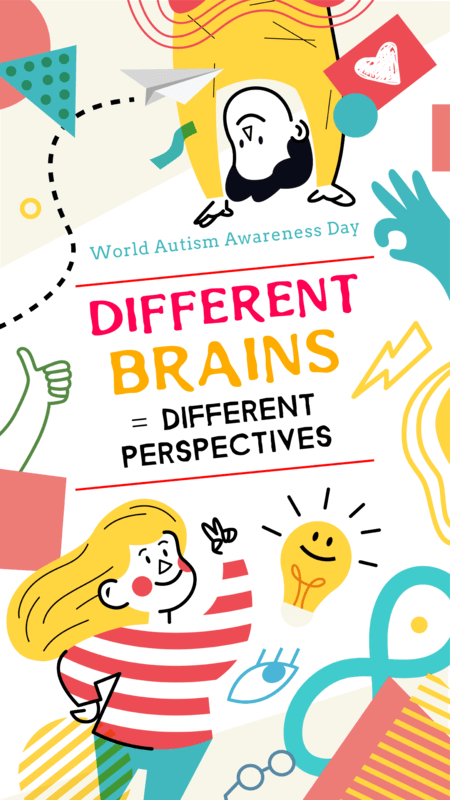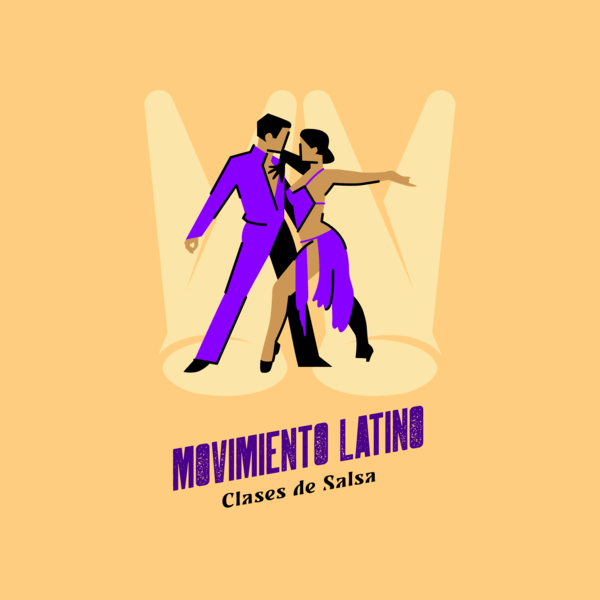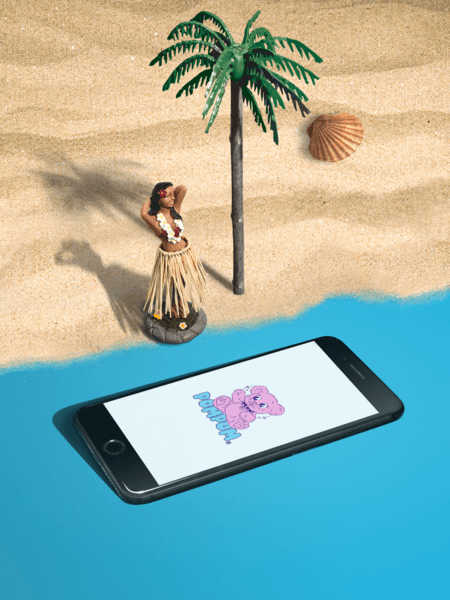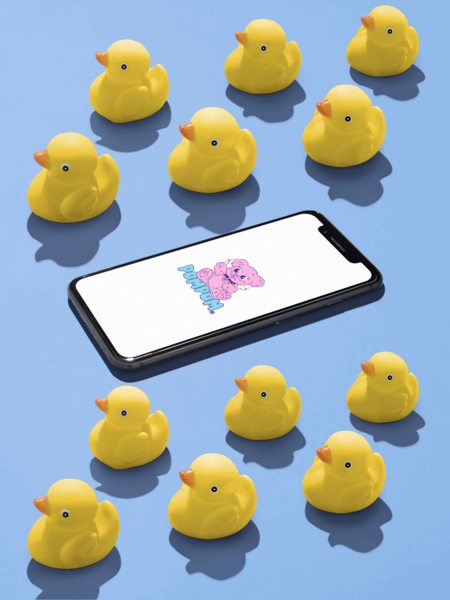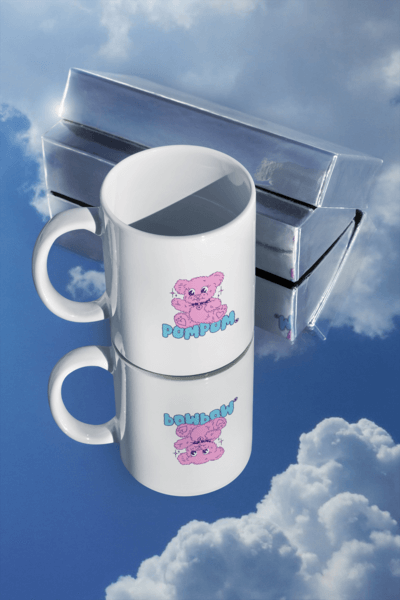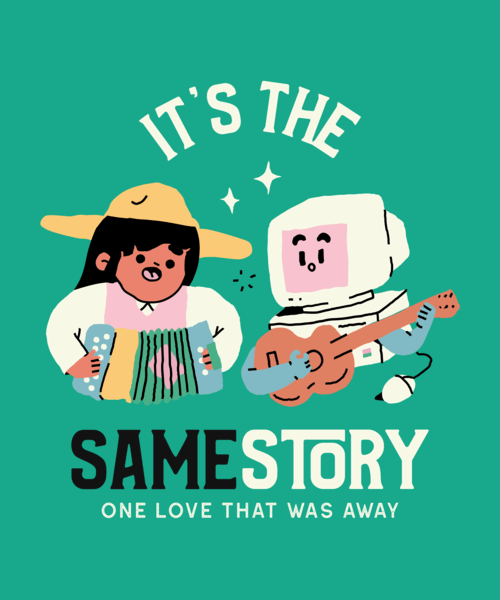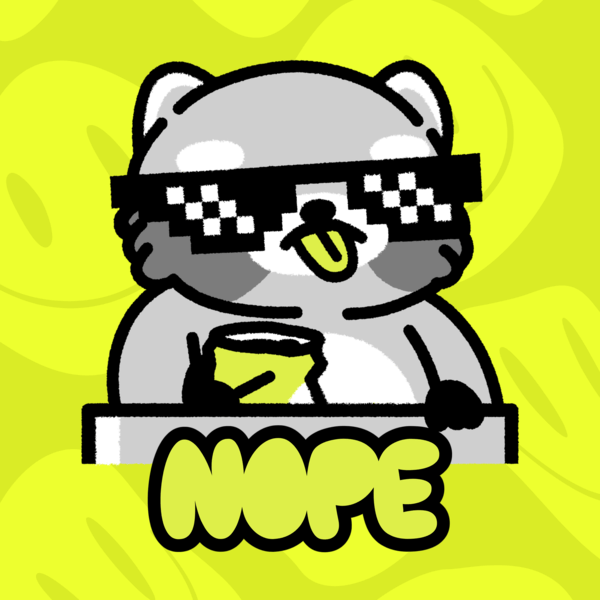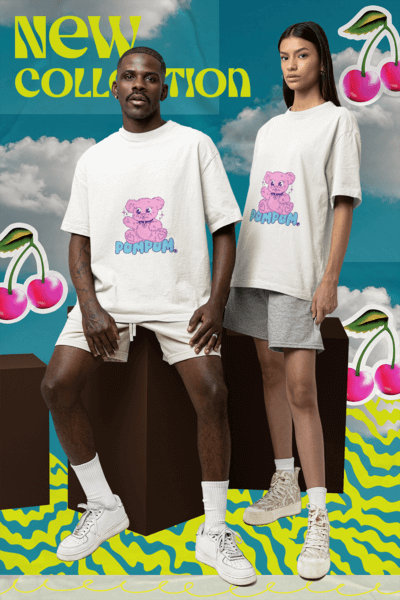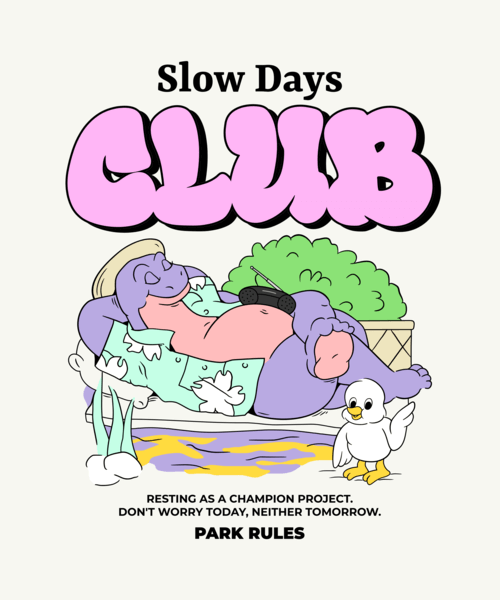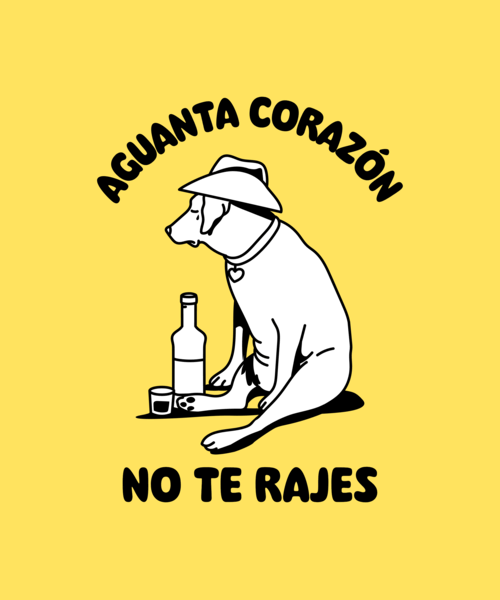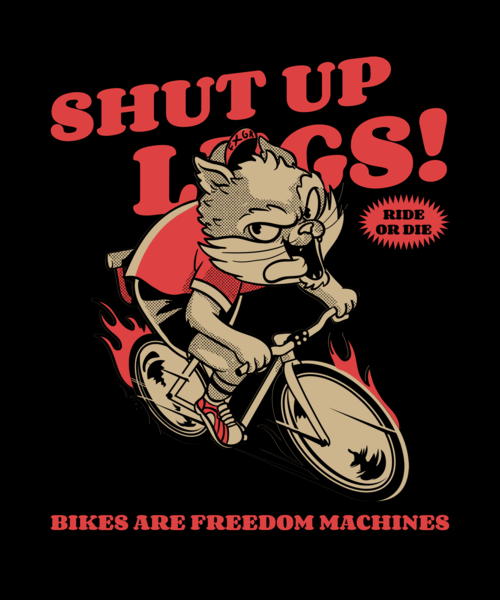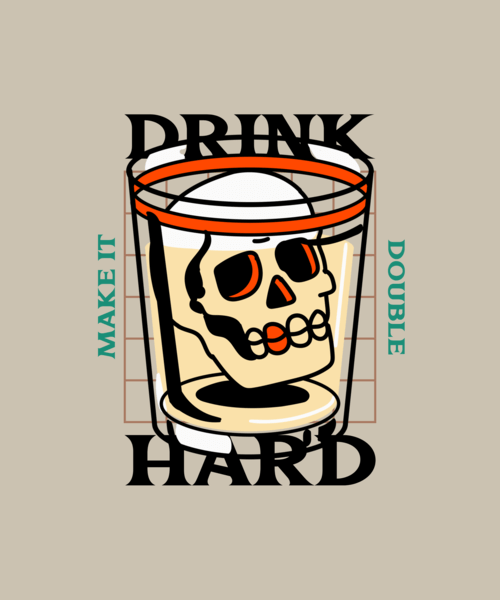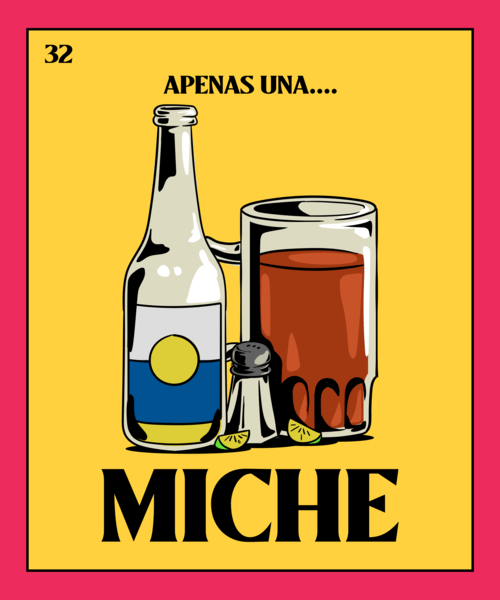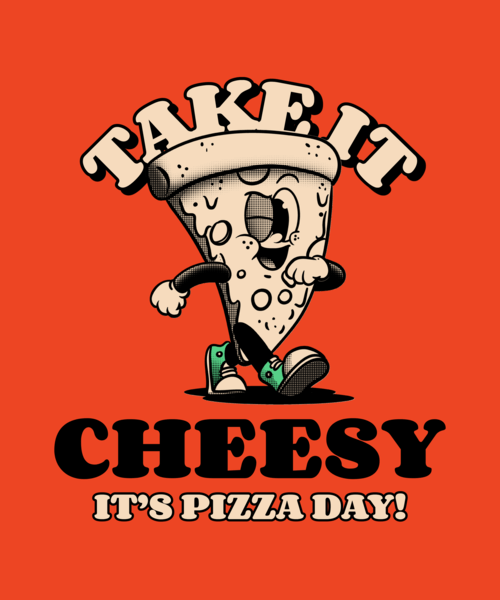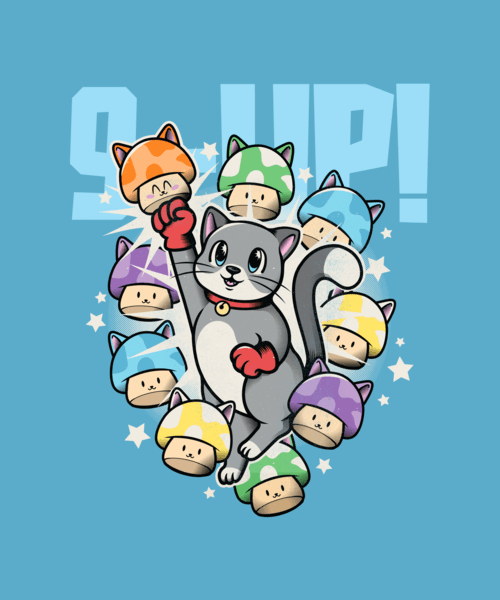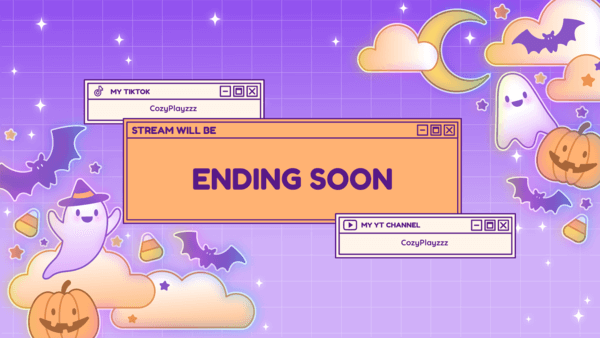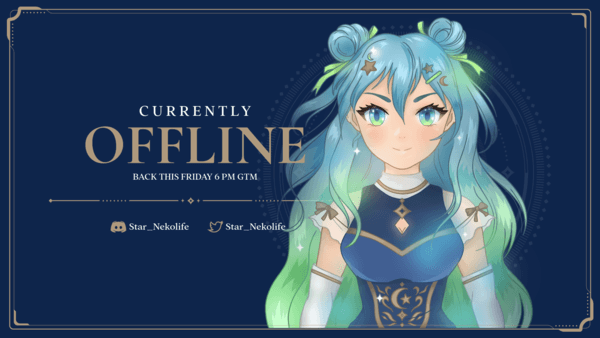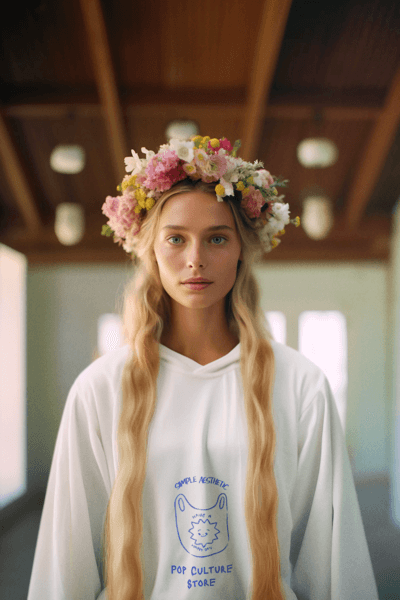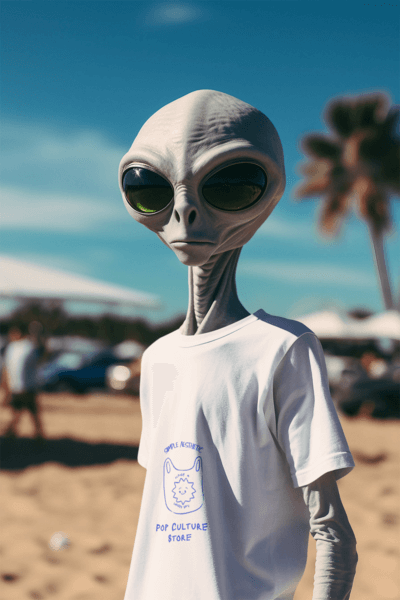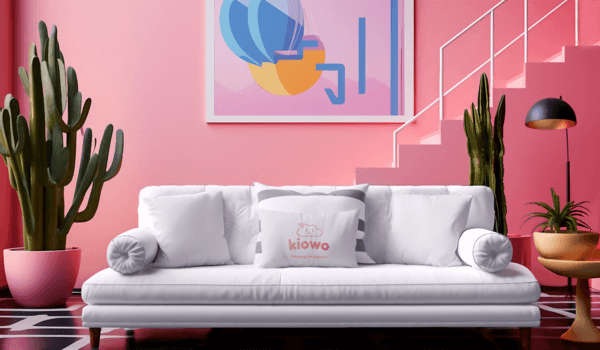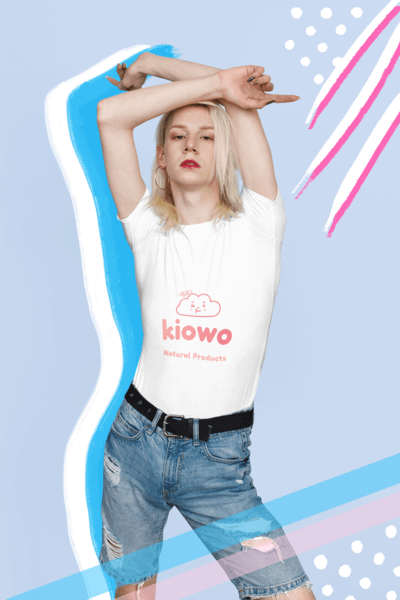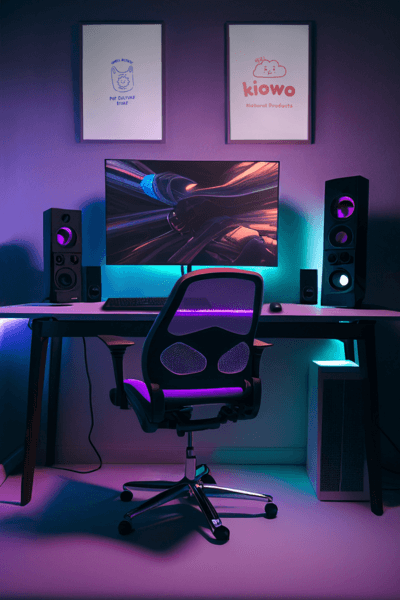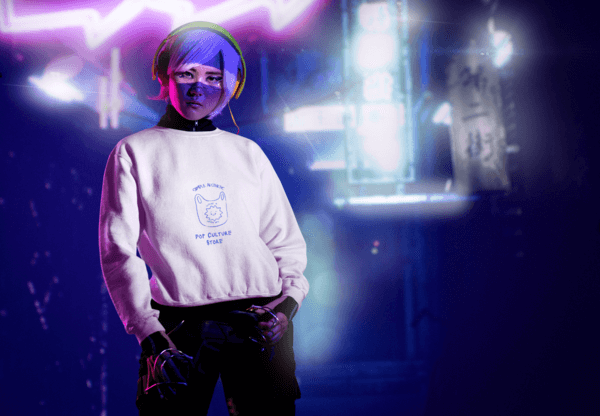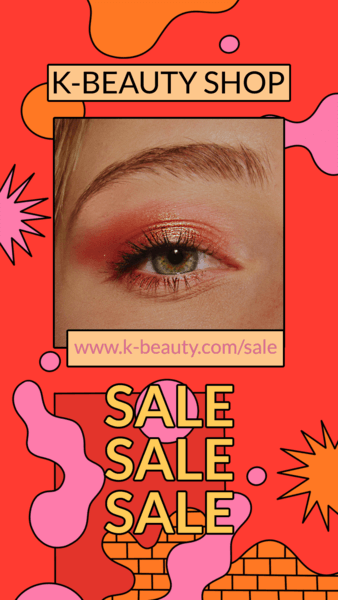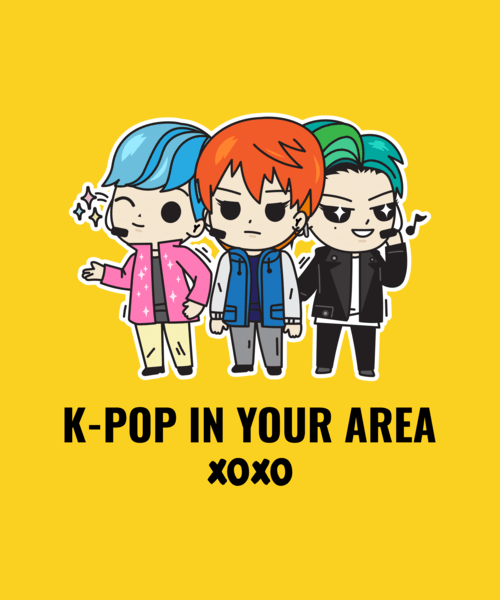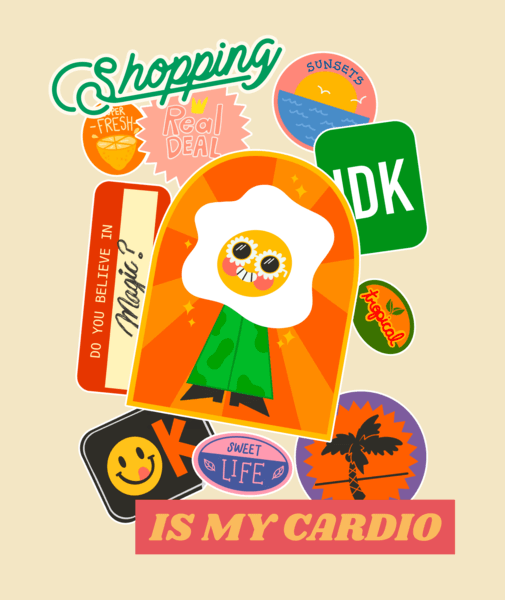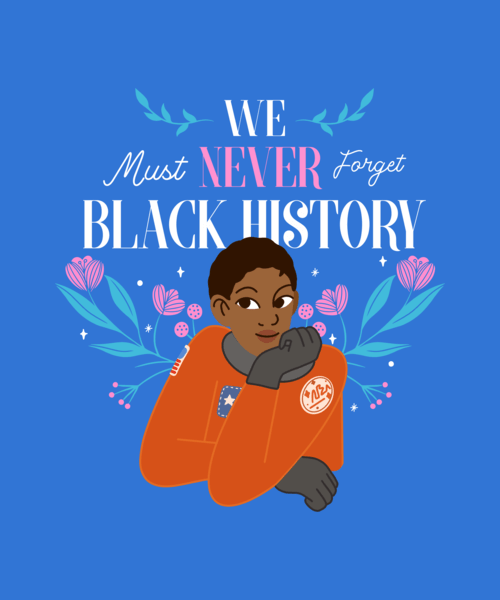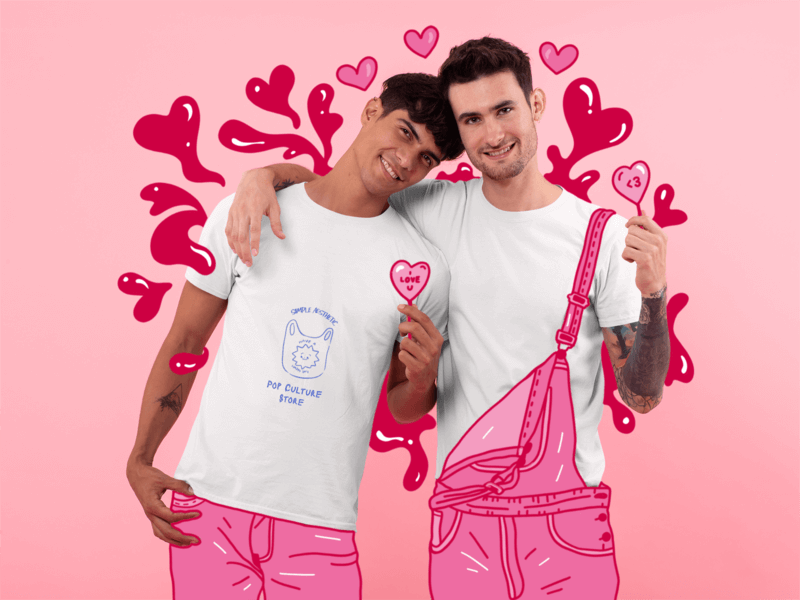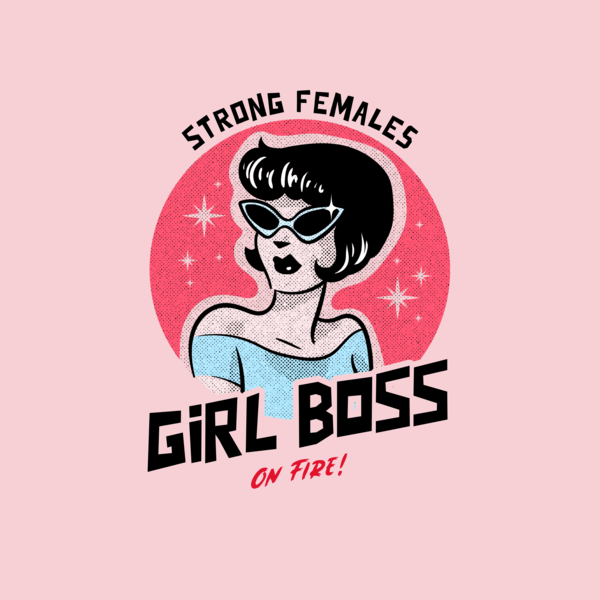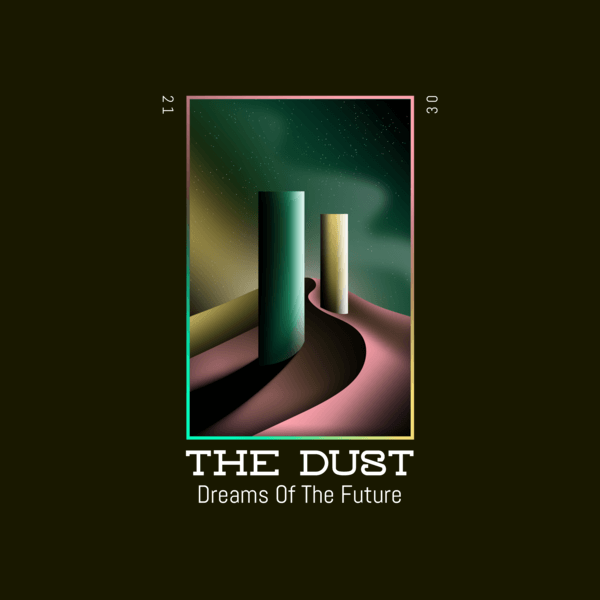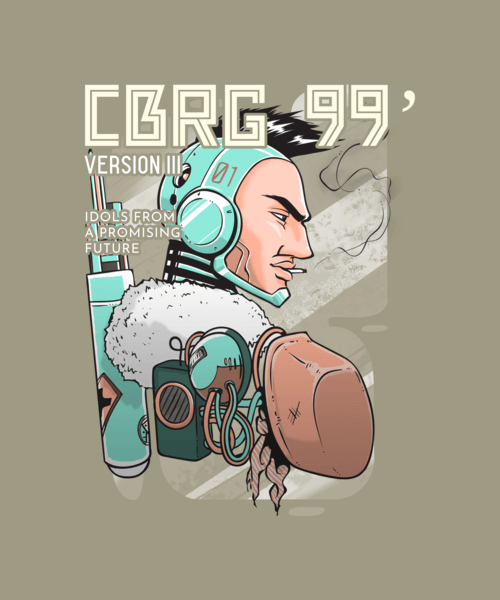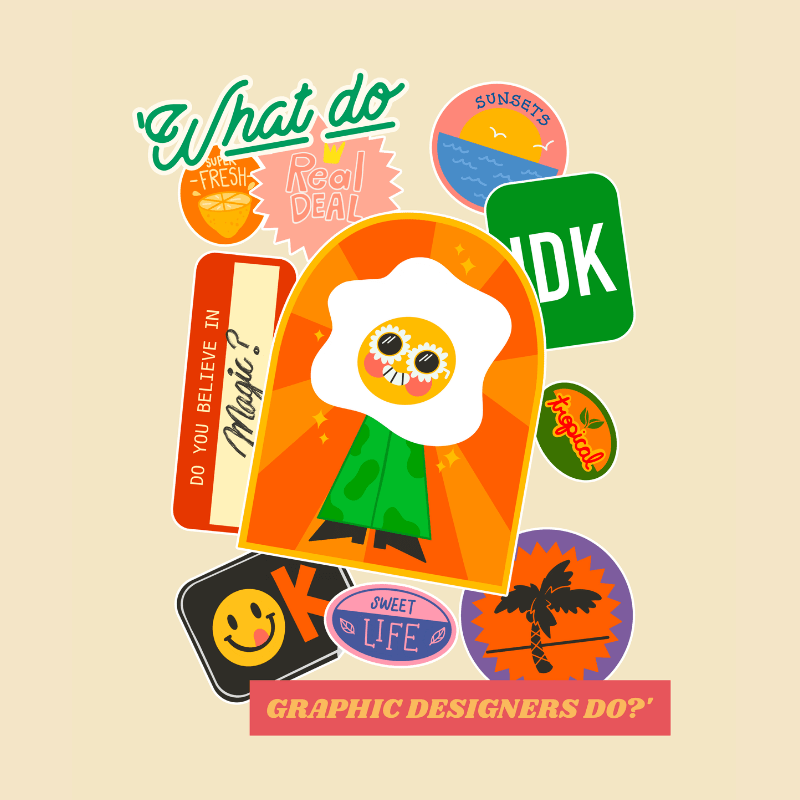
Today, we’re thrilled to introduce you to the creative minds behind every stunning template you see on Placeit. This blog post is all about honoring and celebrating the incredible work of our talented designers. Here, you’ll get the inside scoop on ‘what do graphic designers do?‘, what a typical day making magic for Placeit looks like, and even snag some exclusive and mind-blowing design tips. ✨
But that’s not all! 🚀 Stay tuned because we’ve got a little surprise in store for you as well – we’ll present some of the most epic masterpieces they’ve designed for Placeit by Envato. So, let’s dive in!
🌈😊 Jump Ahead to Your Section of Interest:
- What Do Graphic Designers Do?
- Different Levels in Graphic Design
- Get To Know Our Placeit Graphic Designers
- Dan Gómez: Mid-Level Graphic Designer
- Clau López: Motion Graphics Designers
- Charlie Navarro: Graphic Designers
- George Acosta: Graphic Design Lead
- Danny Navarro: Retouch Technical Lead
- Fide Carrasco: Design Art Lead
- Isro Briones: Graphic Designer
- Clau Valenzuela: Design Art Lead
- Erick Justo: Art Lead of AI & Innovation Projects
- Liz Ramirez: Retoucher
- Lucy López: Creative Director Design & Motion Graphics
- Mau Chavira: Logos Creative Director
- Wrapping It Up
What Do Graphic Designers Do?
Well, this is a broad yet undoubtedly exciting question. In the design world, there are different types of designers, but today, we’ll exclusively focus on graphic design.
Just like a cake with various layers, the graphic design world has its own layers, too. To provide a more precise answer to this question, we’ve invited some of our design superstars to join the conversation and help answer the question of ‘what do graphic designers do.’ 😊⭐🌈
But first, let’s explore the different types of designers.
Different Levels in Graphic Design
Graphic design, like any other discipline, encompasses various skill levels, and it’s a continuous journey of learning and mastery. So, let’s delve into the different types of graphic designers that exist within this dynamic field to understand better the question: ‘What do graphic designers do?’
With up to 2 years of experience, they focus on basic design tasks and learn under the supervision of more experienced designers.
With 2 to 5 years of experience, they tackle more challenging projects. Additionally, they have a greater mastery of design tools.
This creative handles a wide range of projects, including the most complex ones, and often works with less supervision.
With a deep design knowledge, they lead high-level projects and guide other designers.
These are more executive positions that involve leading teams, so they engage in less hands-on design work. In addition, they possess a profound understanding of various techniques and styles.
Requiring more than 10 years of experience, a director oversees design teams entirely. A creative director also makes strategic decisions for the organization’s benefit and foster new initiatives in the design world.
Get To Know Our Placeit Graphic Designers
Now, it’s time to introduce you to our amazing design superstars, and we’re here to share all the knowledge you need! By the end of this blog, you’ll be ready to answer the ‘What do graphic designers do?’ question with confidence. 😉✨
Without further ado, let’s meet our fantastic Content team, the talented creators behind all the beautiful assets you see on Placeit by Envato.
Dan Gómez: Mid-Level Graphic Designer

Dan studied Industrial Design at the Universidad de Guadalajara (UDG) and has five years of experience. Currently, he works as a mid-level graphic designer on the AI team, having started as a junior. 🤩🌟🌈
Dan, What Do Graphic Designers Do in an AI Division?
‘We generate graphics from Midjourney (a Discord server that creates images, photos, illustrations, and vectors using artificial intelligence). We work on them, make adjustments, and create products with them, primarily t-shirts or logos.’
Dan says, 'Midjourney serves as a foundation, and as part of an AI team, we work with this tool every week,' which is essential for the AI designs you see on Placeit.
While working with artificial intelligence is great, it sometimes produces results you don’t want or need. As a designer, ‘you must give them the necessary treatment and pay attention to the smallest details before uploading them to Placeit’.
What Is Your Day-To-Day Like as a Designer at Placeit?
Dan’s daily routine as a designer at Placeit is quite organized and focused on creating graphics for his team. Here’s a summary of his routine:
The week begins with a briefing review meeting led by the creative director. Before the meeting, Dan reads the brief to understand the project and prepares questions to clarify doubts. These meetings provide additional information that may not be evident in the brief. ‘For example, for this week, the task for our team is to create t-shirts based on cult movies but in the form of parodies with cats as the main characters’ (expect them soon). 😉
After the review meeting, Dan looks for inspiration and references on Pinterest. These references help him define the composition and style. He creates a collage to visualize how text is used and arranged in different designs.
Dan takes elements from various references and combines them to create multiple design proposals. The final design is chosen by the creative director, who provides feedback and suggestions for adjustments, such as changes in typography, colors, or composition.
Dan then proceeds to create a skeleton that includes boxes and text. This skeleton is prepared without text or style to add the necessary programming code, which sets boundaries and ensures user usability.
After completing the main design, Dan creates variations in which he modifies colors, text, typography, and graphics generated by artificial intelligence. This is a requirement in his area and helps provide diverse options to users.
💡Throughout the week:
Dan works on nearly 20 different graphics. Additionally, his work requires careful planning and organization to ensure he doesn’t fall behind and to keep up with other team members. This meticulous process ensures quality and diversity in the graphics offered on Placeit. 🤩
What Do You Like Most About Your Job at Placeit?
What I like the most is staying updated with design trends and looking at references daily. Besides my job, I’m also an illustrator, and I love to draw.
🫶 If you’d like to see more of Dan’s work, visit his Dribble or Instagram: @dannyrecordings
And the Most Challenging Aspect of Being a Designer?
‘The most challenging aspect is creating new things, as each week brings something different. It can also take time to adapt to the specific style you are asked to work in. The most important thing is versatility, being able to work in any style; it’s a valuable skill that requires development, but over time, you gain the expertise to master it’.
What Are Your Favorite Tools and Sources of Inspiration?
- Inspiration: Pinterest and music
- Graphic design tools: Illustrator
How to Design? What Are the Top 3 Tips to Do It Successfully?
‘Always seek references and select what you like the most to try and create a remix. It’s not about copying but drawing inspiration from what you like to create something new’.
‘Take breaks to listen to music and stay inspired, avoiding feeling overwhelmed and reducing creative blocks’.
‘…and learn from them, especially if they’re willing to teach you’.
Any advice for someone who wants to become a graphic designer? ‘Practice a lot, be organized, and maintain consistency’.
Absolutely enriching, Dan! 😄 Now, let’s dive right in and make a splash with the top 6 designs created by Dan for Placeit. We’re head over heels for every single one of them! 👇
Clau López: Motion Graphics Designer
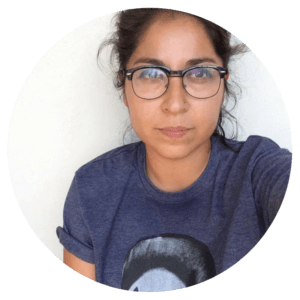
Clau studied Graphic Design and has 14 years of experience. You can currently find her on the Content team as a Motion Graphics Designer. 😉🪄
Tell Us, Clau, What Do Motion Graphics Designers Do?
‘A Motion Graphics Designer is responsible for animating templates, proposing animation layouts, and, occasionally, creating other designs’. Clau’s team is ‘responsible for making videos for platforms like Instagram and YouTube, animating mockups, and everything related to Twitch. In a nutshell, all the Placeit templates that involve movement’.
Moreover, they receive design requests that need to be animated, and the Motion Graphics Designers are in charge of giving them motion and life. At other times, Clau designs and animates projects entirely from scratch.
A Typical Day at Placeit as a Motion Graphic Designer
‘Well, the day-to-day routine varies depending on the project, but it generally starts with preparing the files for animation. This process can take between 3 to 4 hours up to a day, depending on the project’s complexity. Then, we create the layout, which is reviewed and approved by the art team. Subsequently, the file is prepared in Fusion (a software that optimizes the content) before uploading it to Placeit.
Once the project is on Placeit, a test is conducted to ensure everything works correctly. This process usually takes around three days, but the duration can vary depending on how quickly the necessary approvals are obtained. Finally, we leave an update on the progress made’.
What Do You Like Most About Your Job?
‘I love the original motions, as I am also an animator. From the animation proposal to ensuring everything is in sync, I enjoy every step’.
Check out one of Clau’s favorite examples:
👉 This particular project took a week to complete and was a collaborative effort with a designer. 'It took us some time to make it light on the platform and to optimize it, so there was a great effort behind this great piece'.
What Is the Most Challenging Part?
‘There are two things, firstly, the mockups, as they require very delicate clipping work’… Although mockups may look simple at first glance, ‘they require a certain level of precision and take longer to execute,’ says Clau.
Clau quoted a famous saying from a prominent editorial design guru: 'You know you've done a good job when the end user doesn't notice how complex it is.' So, when you see a template on Placeit that seems simple, keep in mind that there was actually a considerable amount of work and effort behind it. 🌟
‘Secondly, (what’s most challenging) is writing the code to ensure that the stage functions properly on Placeit; in this part, you need to know what code to use to structure it correctly’.
Can You Share Your Go-to Tools for Designing?
- ‘Photoshop and After Effects for animation’.
- Her top ‘sources of inspiration are editorial design and illustrators who create animated compositions and typography’.
Top 3 Tips for Designing, Animating, or Working With Motion:
- ‘Make sure you enjoy the project you’re working on. For example, this video took two days because I loved it so much, and I really wanted to create something like it. However, ‘If you don’t find a project particularly exciting, think about usability for users; it will change your perspective.’
- ‘Take notes or look for visual references for the things you want to create, and then figure out how to bring them to life (in this case, apply them to Placeit)’.
- ‘Perfect your composition in design or study layout. Learn to lay out your animated proposals and learn how to code as in the After Effects software. There are expressions (lines of code) that help optimize design and animation times. For example, with a basic understanding of programming, in After Effects (animation software), you can achieve a result in 30 minutes, while manually, it could take around 5 hours. So, learning this will help you optimize production times’.
🤩🚀 In conclusion, thanks to our talentend designers, you can customize a template (like any of these incredible examples) and download it in less than five minutes. Not sure yet? Try our free templates!
Charlie Navarro: Graphic Designer

Charlie studied Graphic Communication Design at the Universidad de Guadalajara (UDG). Currently, he is a graphic designer specializing in creating logos for Placeit. In addition to his focus on logos, he is also dedicated to other types of designs, and his hobby is illustration, which he incorporates whenever possible into the pieces he creates for Placeit. 🤩🪄🌈
Charlie, What Do Graphic Designers Do?
‘Graphic designers translate concepts and ideas into visual formats. While many definitions exist, the central point remains the same: they transform information into a more visual format’.
How Is Your Day-To-Day as a Graphic Designer?
‘I have a weekly routine because the process repeats itself each week. I’ve established a workflow to identify the most critical points I need to develop’.
‘At the start of my day, my first priority is to review communications. I need to stay updated on any information, changes, or projects to keep myself informed. Once I have all the relevant information, I review my objectives and the day’s brief. This helps me define the task I need to tackle. This task can be technical, creative, or a combination of both’.
‘Regarding the technical aspect, I focus on the functionality before and after the creative phase. For example, I consider how a logo will work on Placeit and whether it’s feasible and suitable for the user, ensuring there are no errors’.
‘Regarding creative tasks, I concentrate on understanding the information provided to me, and even if I may be familiar with the topic, I like to research it in detail’. 👇
👾 Technical Tasks
‘Regarding the technical aspect, I focus on the functionality before and after the creative phase. For example, I consider how a logo will work on Placeit and whether it’s feasible and suitable for the user, ensuring there are no errors’.
🌈 Creative Tasks
‘On the other hand, in terms of creative tasks, I concentrate on understanding the information provided. Also, even if I may be familiar with the topic, I like to research it in detail’. 👇
'For instance, Christmas is a theme I'm familiar with, but it's essential to grasp the specific user perspective. The use of colors can vary significantly depending on the company or the type of user. Therefore, I read the brief to understand the objectives and requirements, and I research additional references on my own. Ultimately, everything is done; it's just about recreating what already exists and giving it a fresh perspective'.
What Are Your Favorite Sources of Inspiration?
‘Social media, because we’re constantly exposed to it and can find a wide variety of content. Also, advertising commercials are very visual and auditory; they have everything! So they make me wonder, “How did they come up with that idea?”, “Who thought of it?”
‘Additionally, movies are another source of inspiration for me, especially in how they implement graphic design and who created that visual identity. Lastly, in my day-to-day life, I also find inspiration in my surroundings when I need to design’.
Must-Have Tools as a Designer:
Illustrator, Photoshop, Procreate, a notebook, and a pencil. 😉✏
What Do You Like Most About Being a Graphic Designer?
‘There are no limits. There’s always something new to learn, which keeps you from getting bored. The profession constantly evolves with new trends and tools, breaking the routine and guaranteeing you’ll never be bored because you’re constantly acquiring new knowledge’.
‘Sometimes, there are projects that I like more, and in those cases, I get more involved. I research profoundly or immerse myself entirely in the proposal to improve it. Even when it’s an unfamiliar topic, I dedicate more time to understanding and addressing it more effectively’.
On the Other Hand, What Are the Most Significant Challenges as a Designer?
‘Clients sometimes expect us to cover up to 10 different roles, or they assume that we already master specific tools or styles. This can be a challenge as it requires us to stay up to date and feel the pressure to keep ourselves updated regarding both skills and trends in the design field’.
‘Furthermore, in terms of designing, the most challenging aspect is conceptualization and the unification of the idea and design. It involves researching what the project is about and how to make all the elements fit harmoniously. This includes the choice and justification of typography, colors, and other graphic elements. Once everything is organized, the process becomes more straightforward’.
What Are Your Top 3 Design Tips?
‘…researching, staying informed, and keeping yourself updated. Before you start designing, it’s essential to understand the idea you’re going to convey fully. It’s the designer’s responsibility to ensure that the communication is accurate’.
‘It’s important to know what you want the viewer to see, what you want to prioritize, and how you want the user to read the information you’re sharing. Visual hierarchy is crucial to the effectiveness of your design’.
‘For instance, there might be good designs, but the typography or colors don’t align with the message. It’s like painting a hospital red; it just doesn’t look right. So, be mindful of typography, colors, and their intended use, as they can influence the perception of your message’.
😊⭐ You might want to read our Font Pairing blog post or make a splash into our Color Scheme guide.
'Furthermore, it's necessary to practice, learn from experience, and be open to feedback. Mistakes are great teachers and offer lessons that can enrich your work. Also, remember that not everything is set in stone, so have a solid foundation to explore new ideas, using your foundation as a reference'.
George Acosta: Graphic Design Lead
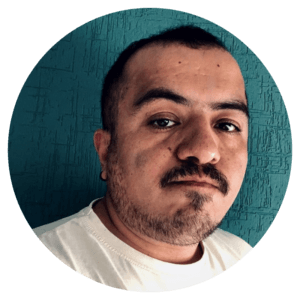
George studied Design and Visual Communication at the Universidad Nacional Autónoma de México (UNAM) at the Faculty of Arts and Design. Currently, George is the Graphic Design Lead at Placeit in Marketing and helps create the most impactful visuals. And he even assisted in designing our new color tool. Take a look at it if you haven’t explored it yet. ✨😉🌈
What Do Graphic Designers Do?
‘Generally, a designer provides a graphic solution to a communication concern or problem. Therefore, the idea of having a graphic designer on a team is to translate ideas or communication topics into a visual format and offer a practical solution to a problem’.
‘Moreover, in the case of a graphic designer focused on marketing, the goal is to support the materialization of marketing initiatives. Whether through graphics, multimedia, video, or audio. The difference lies in being highly focused on conversion and sales objectives. In contrast with other designers/ illustrators who may pursue different design goals and approaches’.
George, Tell Us About Your Day-To-Day Life as a Graphic Designer
- ‘I organize how my day will be, and at the end of the day, I review my planning, see what progress I’ve made, and what I should focus on.
- Then, I prioritize tasks that need attention and take note of them.
- The next day, I refer back to my notes, prioritize what needs to be completed, and decide where to concentrate my efforts. It can involve design tasks, team organization, or other tasks from different areas.
- After this planning phase, I dedicate some time to making progress on smaller projects that I can deliver quickly, as my peak concentration time is in the afternoon when I can focus on larger projects’.
On the other hand, being the leader of the design team in the Marketing department, Yorch shared the following:
'As a leader, I do less actual designing, but I still design. One of my responsibilities is to distribute the workload. For instance, if I know someone on the team who is skilled in video and animations and I have experience in web design, I divide the work accordingly based on our strengths. Additionally, I continue to design because it's essential for my portfolio's development and because I genuinely enjoy the design process. However, I've learned to balance my workload, as time is limited'.
What Do You Enjoy Most About Your Work as a Graphic Designer?
‘What I’m most passionate about is creating proposals. For example, when I perceive a need or a problem, I think about how to solve it. It starts with a written idea or a brief. Then I transform it into a design, giving it a visual form. The most rewarding part is when the person who had the idea can see it materialized visually’.
Also, George told us: ‘As for what I enjoy designing the most, I’ve worked on various projects. However, what I enjoy the most is web design with prototyping and product development’.
What Is the Biggest Challenge You Face as a Designer?
‘One of the things I find most challenging is organization. I often dive deep into creative work and lose track of time.
In design, it’s essential to follow processes, which has been a challenge for me as I can overlook important aspects that enrich the design. Therefore, to overcome this, I’ve learned to document my process. For example, I know that to create a web page, I need to research and talk to the people involved in the project first. Then, I sketch on paper to plan the information layout. Time management is tricky, especially when dealing with recurring tasks. That’s why having an established process is crucial because there are times when inspiration doesn’t strike, and the only thing that can save you is following a set process’.
Where Do You Find Inspiration for Your Creations?
‘Inspiration can come from anywhere; it’s all around us. The key is to remain receptive to the things in your surroundings’. ✨
‘Sometimes, visiting museums can be a source of inspiration, but if you don’t have access to them, you can find them in other places, like movies or cartoons. I get ideas from these sources. I’m drawn to color combinations or effects they use, and I wonder how they achieved them. Then, I research online or see if someone has written about it. Curiosity is key. Anything you notice in your daily life, ask yourself how it was made and if there are more works by that Illustrator. Maintaining interest helps you find inspiration everywhere. Many of the things I like I’ve found on the Internet, but I’ve also read about them, seen them, or had them shared with me’.
Favorite Tools That You Couldn’t Live Without:
‘I love Figma. I used to work more with Adobe and had used Sketch for a long time, but when I discovered Figma, I fell in love with that program. It’s easy to use, and I like its focus on convenience and how it develops its product. Additionally, Figma-related events drew me in and made me feel part of a designer community like I had never experienced with any other design tool’.
Your Top 3 Tips for Designing:
‘While inspiration is great, arriving at a result without a clear path can be an act of experimentation. It’s always helpful to have a process and document it. Even when you’re experimenting, documenting will allow you to replicate your successes in the future. This way, if you want to achieve a specific result, you’ll know how to do it by following a documented process’.
‘Instead of criticizing the work of others, try to understand how they did it and what they thought. Look for interesting aspects in others’ work and learn from them’.
‘In every design you create, try to incorporate elements that you genuinely enjoy. For me, including illustrations in my projects is what makes me like them. Find a balance between making money and still enjoying what you do without it becoming an obligation. Don’t settle for what you learned in school; be self-taught and learn about new things. Enroll in courses, attend conferences for a fresh perspective, and keep moving, keep exploring’.
🤩🚀 Now, take a look at some of the favorite graphic design pieces George has created:
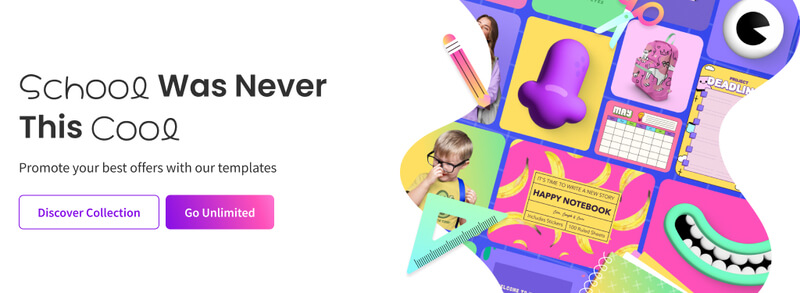
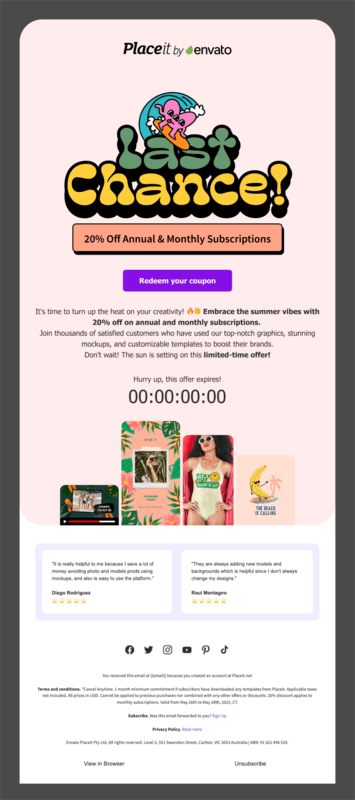

Danny Navarro: Retouch Technical Lead
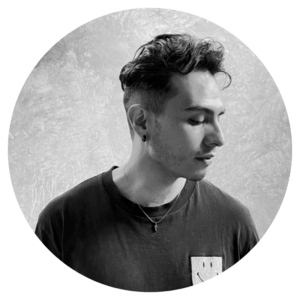
Danny studied Architecture, but thanks to his experience in Photoshop (which remains his primary working tool), he is part of Placeit as the Retouch Technical Lead, responsible for retouching all the mockups you see on Placeit. 🚀🤩🪄
Danny, What Does a Retouch Technical Lead Do?
‘My role might seem a bit ‘robotic’ because it involves having a deep knowledge of Photoshop to assist others or solve any site-related issues that may arise. Moreover, I’m responsible for ensuring that everything works correctly and keeping documentation up to date on the steps to follow. Finally, I resolve effects, support the art team in case of issues, and offer solutions. I’m also responsible for team training, providing tutorials, explanations, and follow-up. All of this requires a thorough and detailed review of processes’. 💡
What’s a Typical Day Like in the Retouch Team?
‘The first thing I do is check Slack for any urgent messages. Then, I go through my email to check for Customer Support requests and follow-up. If a Placeit user sends a request to fix something, add an effect, or change a color, we take care of it. I also respond to common queries from the team to improve the mockups, and we perform peer reviews, which involve reviewing the work of my colleagues to ensure it’s ready for customers with no errors in any image’.
‘The requests we receive often involve enhancing and correcting old photos and updating them. Sometimes, customers want to explore the possibility of designing something that changes color, and we handle that. These customer needs are what come to the mockup area’.
✏ Danny's team handles around 12 to 15 weekly tickets, addressing and resolving requests from our subscribers.
What Do You Like Most About Your Job?
‘What I like the most is tackling new challenges and creating new elements and effects. We know how to do it, but we need to adapt it to Placeit. Additionally, I enjoy providing feedback to the team, explaining tutorials, and sending videos. We all learn together. I teach them how to do something, and in turn, they explain it to me. It’s an exchange of ideas.
😱 Currently, Placeit’s Retouch team consists of 12 retouchers and 3 leaders.
What Is the Most Challenging Aspect of Your Position?
‘One of the most challenging things is when new elements or effects emerge. In those cases, I have to review them with the Art Lead and the Creative Director, which sometimes takes longer than providing an immediate response. However, I like discussing it with other team members because I wouldn’t want everything to rely solely on my perspective, as we can sometimes have biases. So, we all collaborate on these decisions.’
Tools and Programs That You Like for Your Work:
‘Photoshop and Airtable. Airtable is like an improved version of Excel and helps optimize tasks and manage processes, such as peer review and team corrections, among other tasks’.
Top 3 Tips for Retouching Photos:
‘Sometimes, monitors can display colors that are either dull or oversaturated. They should be calibrated correctly in terms of color so that the result resembles real life’.
‘Analyze whether the color change is feasible and ensure it is appropriate to achieve a good result, even in the case of challenging photos. This involves reviewing your work at least five times. Do it from the perspective of a retoucher, a client, or a member of another team. This will enrich your work and ensure it works for all parties involved, including clients with specific needs. The point is to be observant and ensure we always achieve a good result, even in the case of difficult photos’.
‘Sometimes, specific details can be overlooked, especially in retouching. Willingness to learn and not take it as criticism is essential. It’s also crucial to be open to communication and ask questions to find alternative solutions’.
Now, let’s dive right in and explore some of the fantastic mockups that Danny has skillfully enhanced! ⚡
😌✨ Enjoying this post? Then you might want to read our Placeit Reviews made by Influencers!
Fide Carrasco: Design Art Lead
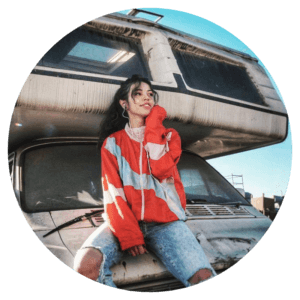
Fide studied Graphic Design for Communication at the Universidad de Guadalajara (UDG) and currently serves as the Art Lead in the Content team. So let’s check what do graphic designers do in this position. 🌟😉🫶
What Does a Design Art Lead Do?
‘We support the Creative Director and are part of the design team. Our work involves assisting in creating briefs for project development. In these briefs, we define references, the project’s goal, the target audience, and the technical details that designers will need to work on the project. We also propose ideas for future projects or trends and present them to the Creative Director, who evaluates their viability and schedules them accordingly.’
In addition to these tasks, Fide also oversees the work of designers to ensure they meet quality standards and provides them with feedback and guidance.
'Ideas for projects come from various sources, such as social media, highly anticipated upcoming releases (movies, series, and video games), reports prepared by the publishing team on searches on Placeit, and, of course, the inspiration we draw from what our users are doing. So, we document these findings, explore how we could work with them, and the Creative Director evaluates them.'
‘Finally, we carry out trendy design projects, and if designers want to participate or if there are special projects, we assign them to keep designing and stay updated, allowing them to put themselves in the shoes of a graphic designer.’
😊 In Fide's team, there are 12 designers, 2 Art Leads (including herself), and 1 Creative Director (Lucy, whom we also interviewed).
What Is Your Day-To-Day Like as a Design Art Lead?
Fide’s day is highly organized to fulfill all her tasks successfully. Her day is divided into creating briefs, reviewing design projects, providing feedback to designers, and also working on some graphics.
In Fide’s words, ‘it’s crucial to stay organized, and ‘concentration is like gold. Otherwise, there can be constant interruptions, and your day can slip away.’
Fide’s Favorite Sources of Inspiration Are:
‘I like to see everything on social media, Instagram, Pinterest, Savee, Behance. If you want to delve into a subject, dive in thoroughly, read books or newspapers, watch movies, series, or YouTube, and feed your curiosity. Visuals aren’t everything; you have to delve into the subject to understand it fully. For example, I love learning about other cultures and conducting in-depth research because sensitive topics of religion or culture are involved. A designer can’t convey the right idea just by looking at images; you must research and learn about the subject. This way, they’ll know what they’re doing, and that’s important. Understanding topics from other cultures and contexts in depth is challenging but beautiful.
I also like to observe my surroundings, whether it’s in homes or advertisements’.
What Do You Like Most About Your Job?
‘I am very curious, and I enjoy satisfying my curiosity by experiencing new things’.
What Is the Most Challenging Aspect?
‘Patience is required because some things take time. Learning to communicate as a team, and even with yourself, can be challenging. Wanting people to understand what you want to convey takes time.
You need to put yourself in the other person’s shoes. It’s not about imposing visions but understanding the project’s needs and coming to an agreement. For example, I always aim for my feedback to be valuable not just for that particular project but in a broader sense. My goal is for the person to understand why, for example, a particular approach is more suitable for this target audience or why, in a specific situation, certain decisions are more appropriate. This way, the person can grow and learn’.
How to Design? What Are the Top 3 Tips to Do It Successfully?
‘Breaks are essential to avoid burnout. If you continue working without interruptions, you get used to seeing the same mistakes, so it’s good to take breaks’.
‘Always consider the audience and the needs you’re trying to address with your design. Sometimes, as designers, we need to remember the primary purpose to get caught up in experimentation. However, paying attention to these elements is essential because, for example, you might like it, but if it’s intended for a specific audience and they don’t like it, you work in vain. Fide emphasizes that ‘designers, more than cartoonists, are problem solvers’.
‘Flexibility is vital in design. It can be challenging to undo work you’ve already done, but sometimes, it’s necessary to achieve better results. Being open to feedback is crucial for growth. Also, don’t hesitate to take the initiative if you can help with some aspect of the project. Initiative and openness can make a difference in the quality of the final work’.
To conclude this section with Fide’s top tips, we want to share her top 6 designs that she’s most proud of (and we loved every one of them) 😍
✨🎨 Enjoying the expert insights from Placeit’s art and design teams? Don’t miss out on How to Be Creative — Tips for Staying Ahead in the Industry!
Isro Briones: Graphic Designer
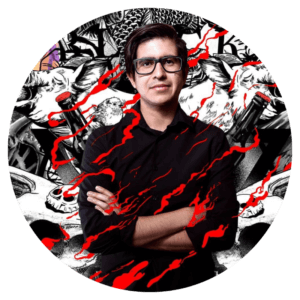
Isro studied Graphic Design at the Universidad Autónoma de San Luis Potosí. With over 10 years of experience, he has contributed his talent to be part of our team of graphic designers. Isro often creates designs for social media, Twitch, and gaming, but what he is most passionate about is illustrating t-shirt designs. Let’s see what Isro can share about the work of a graphic designer. 😌🌈🌟
Isro, What Do Graphic Designers Do?
In short, they solve communication problems using visual resources.
What Is Your Day-To-Day Like as a Graphic Designer?
‘First and foremost, it’s important to highlight that ‘having a standardized system of steps works a lot.’ Isro starts by thoroughly reviewing and understanding the design brief, creating a moodboard with ideas, and working on the visual part. This process helps to have a clear path for the project, and it is divided throughout the week to meet the expected standards at Placeit’.
🌈 Want to know how to create a moodboard like Isro? Then, keep reading How to Make a Moodboard: The Best Beginner’s Guide.
🤓 Depending on the complexity of each project, Isro usually creates between 5 illustrations per day or 1 in an entire day. Generally, t-shirt collections take a week to complete, mainly because Isro comments that 'all the graphics are created from scratch'.
‘Sometimes, I use sketch AI for ideas, structures, compositions, or inspiration. But I draw everything from scratch’. In his professional opinion, ‘it’s always better to have and solve things with paper in hand to know what the final result will be. It also provides clarity and resolves creative blocks’.
Isro’s Favorite Sources of Inspiration:
‘Inspiration can come from anywhere as a designer and illustrator, but I find it in the things I like. For example, food, songs, or my everyday life (which has nothing to do with design) thanks to personal daily experiences that serve as inspiration.’
Favorite Programs for Designing:
‘Photoshop, Cintiq tablet for on-screen drawing. Also, Illustrator, my iPad, and Procreate’.
What Do You Like Most About Your Job?
‘I enjoy illustrating a lot. What I like the most is developing many styles because it has enriched my professional work, processes, and different styles. I’ve picked up little things that have improved my work, polished my technique, and experimented with various color palettes. It’s very enriching to work in different ways or even in a team, where you have to adapt to the style of other designers’.
What’s the Most Challenging Part of Being a Graphic Designer?
‘Sometimes, it’s when new topics come up. It’s challenging, for example, when I know nothing about gaming, but I have to design graphics for this audience, and I have to dive deep to come up with a great proposal’.
What Are Your Top 3 Design Tips?
‘Don’t try to solve everything in one go. Take a break, and then come back fresh and make decisions about it’.
‘Develop sensitivity to anything to find inspiration in the details, even in your daily life, to find good things in the simplest of the world. I realized, for example, that many designers and illustrators select their color palettes from the fruits they have at home. So, be attentive to those kinds of things to apply them to your designs’.
‘…and the things you like to do will get you to where you want or need to be’.
And that’s it; now let’s take a look at some of the beautiful art pieces that Isro has designed for Placeit. 🙌
Clau Valenzuela: Design Art Lead
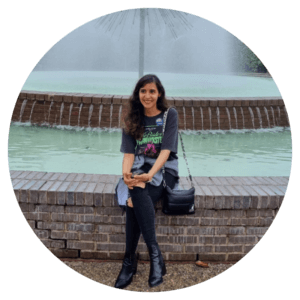
Clau studied Graphic Design and currently works as a Design Art Lead. Today, we interviewed her to answer ‘what do graphic designers do’ but in a higher position. So let’s take a look at what Clau has to share! 🤩⭐🌈
What Do Design Art Leads Do?
‘Art Leads keep Placeit’s design templates relevant, ensuring they are trendy, attractive, high quality, and helpful for Placeit’s users’.
What Is Your Day Working as a Design Art Lead?
‘My day-to-day involves reviews, researching topics and trends, writing briefs. But also providing all the necessary information to the team so they can focus on creating amazing content’. 🚀
What Do You Like the Most About Being a Design Art Lead?
‘Pretty much everything. But what I enjoy most about my job as an Art Lead is bringing different trends into commercial products that help our users achieve their goals’.
The Most Challenging Thing in Your Career Is?
‘The most challenging aspect as an Art Lead is staying updated with everything happening today. The trends cycle feels faster, and sometimes it becomes challenging to keep up’.
Your Favorite Inspiration Sources Are?
‘My favorite sources of inspiration are everything I can see! Internet, TV, cinema, music, social media, series, and fashion. But I also like disconnecting and finding inspiration in outdoor spaces and travels’.
What About Your Go-to Tools?
‘I really like Adobe Illustrator for its cleanliness and the practicality of vector format. I also enjoy sketching using Procreate. Photoshop is another program I use to give illustrations a more organic touch and create interesting texture and color effects. Finally, I enjoy animating my designs with After Effects’.
Clau’s Top 3 Design Tips:
‘Before even picking up the pencil, it’s essential to think about who it’s directed to and what the design’s purpose is’.
‘Sometimes, we might skip that step, but it’s fundamental for the work to flow in the best way, and in the end, it saves us time and problems’.
‘Always check the hierarchy of the elements in our design’.
✏ To know more about hierarchy in design, keep reading our 12 design principles to swear by.
🌟😉 'To be an Art Lead, it's crucial to stay updated on trends, not only in design but also in pop or general culture, and learn to give and receive feedback constructively'.
To conclude, let’s take a look at some of the gorgeous and professional designs Clau has created for Placeit. ✨😊🫶
Erick Justo: Art Lead of AI & Innovation Projects
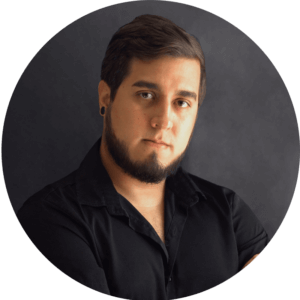
Erick studied Digital Art and Animation, and currently, you can find him as the leader of the AI and Innovation Projects division 🪄. Undoubtedly, it’s an exciting team and role. Let’s dive in! 😊🤖✨
What do Art Leads of AI & Innovation Projects do?
‘My role consists of developing innovation prototypes, whether it’s creating new products or merging artistic creativity with new technologies. Also, collaborating with a team of artists, and ensuring that projects align with the company’s strategic objectives’.
🚀⚡Want to know more about AI? Then check out this AI tools blog, where we interviewed Erick too.
What Is Your Day-To-Day Like at Placeit as an Art Lead of AI & Innovation Projects?
'My day combines brainstorming, artistic creation, collaboration, and project management'.
What Are Your Favorite Sources of Inspiration?
‘Almost any resource, from a movie, book, or song, can be a source of inspiration for me. For example, images are the most important to me, so I collect as many as possible. I also find inspiration at the intersection of art, nature, and technology’.
What Do You Like the Most About Your Job?
‘Besides working with various talented and multidisciplinary teams, what I’m most passionate about is the opportunity to break creative and technological boundaries to see how technology and creativity come together to create something entirely new and exciting’.
What Is the Most Challenging Part of Your Role?
‘The biggest challenge is maintaining a balance between innovation and functionality. Sometimes, our most creative ideas must be adapted to meet project objectives and technological limitations. Finding that balance can be quite a challenge’.
What Design Programs and Tools Are Essential for Your Day-To-Day Work?
‘I mainly use After Effects, Blender, Midjourney, and Photoshop due to their versatility. By combining these tools, you can practically create whatever you can imagine’. 😌🪄
Erick’s Top 3 Tips for Designing With AI:
‘It’s essential to know what artificial intelligence can and cannot do and how it can enhance or automate tasks’.
‘While it’s true that today we can achieve great results with AI without much expertise, if you want to express a unique vision, you need to have knowledge of art, styles, and composition and improve your written communication to translate visual ideas into words’.
‘Use AI to boost your ideas, not replace them’. 😌
🚀 Extra Tip:
'I would recommend constantly learning, whether through online courses, in-person training, or self-study, about artistic processes and project management. Additionally, immersing oneself in the online design and technology community is essential to stay up-to-date with the latest trends'.
To conclude this section, here are 6 stunning pieces that Erick has created and added to our library:
'3D mockups were an essential part of my new role, allowing me to merge the complexity of 3D with fabric simulations in a web interface. Commercially, this resulted in the creation of a new product'.
Liz Ramirez: Retoucher
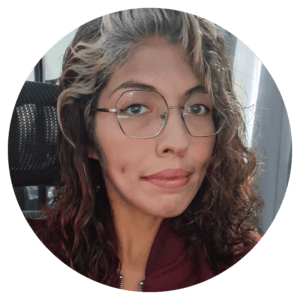
Liz, from the Placeit Retouch team, studied Graphic Design with a focus in Communication. Let’s dive deeper into what graphic designers focused on retouching do. 🪄🤩
What Do Graphic Designers Focused On Retouching Do?
‘We prepare images through various processes, such as adjusting the color, cleaning up the photo, and generally enhancing the appearance of the original image to achieve the best possible result. Then, we turn it into a mockup so users can place their images. Currently, we’re not only working with photos; we’re also starting to invest in images created with artificial intelligence, which can even have an illustrative look’.
😎 Unlock this Ultimate Guide to Placeit Mockups to learn how to get the best out of our massive collection.
What’s the Relationship Between a Retoucher and Design?
‘A retoucher must have a foundation in composition and color harmony because an image or photograph is a fundamental design part. Therefore, the retoucher works on creating a view that highlights the image, whether by enriching the color, cleaning up the image, or bringing out details’.
What’s Your Day-To-Day Like at Placeit?
‘I start the day with a daily review, checking previous mockups to ensure they’re optimized or making adjustments if necessary. Then, I take note of the needed corrections, and if they’re simple, I do them by-myself. Next, I review my colleagues’ tickets, check their status, and give the green light or suggest improvements if needed. After that, I select the tickets I’m going to work on, review them to identify necessary adjustments, and check the colors that need improvement’.
🎟️ Tickets are a form of communication in the form of tasks for addressing issues or topics. In this case, requests from our subscribers. 😉
What Do You Like Most About Your Job?
'I value constant feedback the most because it has helped me improve day by day. Now, I have a sharper eye for details that used to take me hours. I also enjoy the variety of complexity in the tickets; I can work on something simple one day, and on other days, there may be projects that require neon lights, shadows, or even fog. This makes the work non-monotonous and allows me to learn continuously'.
What’s the Biggest Challenge?
'The biggest challenge for me is when new things come in, like artificial intelligence (AI). It involves learning new processes and making adjustments, requiring creativity to problem-solve. It's something new for me and can be an exciting challenge'.
What Are Your Basic Design Programs for Your Work?
‘My essential programs are Photoshop and Lightroom. I know their shortcuts, where the tools are located, and what they do, which makes my work easier. It’s also easy to find information and tutorials about them’.
Your Top 3 Tips for Retouching Pictures:
‘Dive into color theory because we handle light, and knowing how to enhance a photo with colors and composition is crucial. For example, a basic photography course can be beneficial. On YouTube, you can find resources ranging from complete courses to details on how to change the color of a shirt’.
‘There’s always something new to learn, whether it’s in terms of tools, tutorials, or styles. This field is very diverse, and constant improvement is vital’.
‘Seek feedback by showing your work to someone who can offer a fresh perspective. If someone finds something odd or doesn’t notice the adjustments you’re making, it means you’re on the right track. Feedback is essential for growing as a retoucher’.
Now, let’s take a look at some of the mockups that Liz has worked on to give them that incredible touch so they look of the highest quality. 🌟🤩
Lucy López: Creative Director Design & Motion Graphics
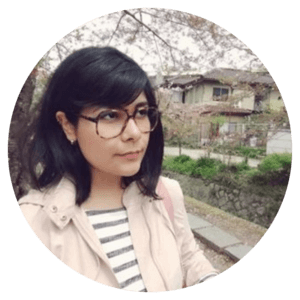
Sandra, better known as Lucy, studied Graphic Communication Design at the University of Guadalajara and currently serves as the Creative Director of Design and Motion Graphics at Placeit by Envato.
🚀😍 If you want to learn more about her role and the impact and talent she brings to the Content team, keep reading:
What Do Creative Directors of Design & Motion Graphics Do?
‘My main role is to ensure that the content (design templates) we create is relevant, innovative, and valuable for our users. It’s also part of my responsibilities to anticipate creating seasonal and trend-related content that could be relevant to our users’.
What Is Your Day-To-Day Like as a Creative Director of Design & Motion Graphics?
‘I like to meditate in the mornings before starting my day. I usually have several planning meetings with the managers, catch-ups with the designers and animators, and brainstorming sessions with the Creative Directors of Placeit’s Content team. Additionally, I’m responsible for daily supervision and direction of the progress of each project being worked on by the Design and Motion teams, with the help of Art Leads. Our job is to ensure that the designs and animations produced are high-quality, visually appealing, and relevant to our users’.
What Do You Like Most About Your Job?
'Developing briefs and research for future templates is my favorite part of my job, as it allows me to visualize new ideas we could bring to the Placeit platform. It's fascinating to do this exercise. When I see a new trend or have an idea, I wonder: how would this product or aesthetic look when translated into a Placeit template?'
What’s the Most Challenging Aspect of Your Role?
'The most challenging part is keeping our offering diverse and relevant. We aim to ensure that all the content we work on is of the highest quality. Also, we're constantly working on a wide range of topics to expand our offering of designs, logos, videos, and mockups for all our users'.
What Are Your Favorite Sources of Inspiration?
‘I love graphic novels and internet comics. I follow many artists who create micro-stories or share anecdotes of daily life through comic panels. I also stay on social media all the time. I visit TikTok, YouTube, Instagram, and Pinterest daily to immerse myself in what’s happening in the internet world. Additionally, I like to visit design blogs and consume news about current events, fashion, and technology’.
What Are the Essential Tools You Can’t Do Without in Your Daily Life?
‘I enjoy illustrating, so the tool I use the most is Procreate on my iPad. I use it for everything: sketching, creating simple animations, illustrating, and making notes’.
What Are Your Top 3 Design Tips?
‘Staying active in the creative field is essential for a designer. Each new project is a challenge, and continuous creation helps exercise our creative thinking and find solutions through design’.
‘It’s essential to feed your mind and creativity. New tools and techniques in design, animation, and illustration emerge every day. Staying up to date and selecting what you find beneficial can help you further develop as a designer and keep current in the industry’.
‘Creative professionals often become passionate about their projects and designs, occasionally forgetting to rest and hydrate. It’s crucial to recognize your limits, rest when necessary, and then return to your creative work’.
What Advice Would You Give for Aspiring Creative Directors?
‘Observing and asking many questions is part of creative work. Keep your curiosity alive’.
‘Consume various types of content on the internet, from movies and series to anything that piques your interest. You never know when or where your next idea will emerge’.
‘As a creative director, you must learn to anticipate trends in the industry to have a vision that helps you identify the direction of the design world and market behavior’.
🌈 Lucy, with her background in design and graphic design experience, enjoys staying updated in the design field. Here are her top 5 pieces that she feels most proud of (and we love them). Check them out.
🤩🪄 Want more design tips? Then keep reading How to Make Design Templates Not Look Like a Template. On that blog, Lucy gave us insightful and useful tips for designing!
Mau Chavira: Logos Creative Director

Mau studied Communication Sciences, and halfway through his studies, he became interested in illustration and design. His professional career has spanned various disciplines, such as advertising, production, copywriting, design, and illustration. His current role is Logos Creative Director. 😎⚡
Mau, Tell Us, What Does a Logos Creative Director Do?
- ‘As a Logos Creative Director, my responsibility is to ensure that the content we produce is relevant in terms of quality and trends, as well as visually appealing.
- I oversee the aesthetic aspects, defining visual elements and the product’s conceptual coherence.
- I review proposals and ensure everything is in place regarding design, avoiding graphical errors and poor combinations.
- I also monitor trends and check popular themes in contemporary culture that we need to review to keep the content updated periodically.
- I provide feedback, make suggestions, and closely follow the creative process of each team member.
- Additionally, I ensure that the copy aligns with the design and requested specifications.
- I review the final graphics and the functional process, from proposal to publication.
- Finally, I propose new industries, styles, and trends within Placeit and seek opportunities to refresh ideas and techniques in products or niches we have already worked on’.
What Is Your Daily Routine Working for Placeit Like?
‘My day-to-day involves reviewing proposals, setting complexities, providing feedback, reviewing the schedule to assign projects to be worked on each week, and ensuring that key objectives are met. I constantly review production metrics to ensure everything we produce aligns with our goals. Everything must be in order to meet quality parameters and brief specifications. I also dedicate time to review the final graphics and make corrections as needed’.
What Do You Enjoy the Most as a Logos Director?
'I enjoy proposing new themes and products, and I like the feeling of being able to create products that we didn't have before. I also enjoy reviewing trends and exploring how we can apply topics related to artificial intelligence'.
What Is the Most Challenging Part?
'The most challenging part is creating new products and working with people, especially when providing feedback. Over the years, I've learned the importance of considering individual needs and perspectives when dealing with people. This has pushed me to be more empathetic and open. Although it's a challenge, it's also enriching'.
What Are Your Favorite Tools for Designing?
‘Illustrator is my favorite tool. I’ve been using it throughout my career, and I feel most comfortable working with it’.
Top 3 Tips for Designing Logos:
‘Conduct thorough research before finalizing an idea. Immerse yourself in the subject, and observe the styles that have been used around your concept before developing it’.
‘Start by sketching your idea and conducting tests to explore different approaches’.
‘Seek opinions from other people, especially those whose opinions you respect. Listening to different perspectives will allow you to enrich your design with the best ideas’.
Being a Creative Director can be a challenging job since it involves reviewing the work of many people and can be subjective. Creative aspects are linked to emotional processes, and designers, illustrators, and artists often incorporate their emotions into their work. Therefore, be empathetic, open, and considerate when reviewing others' work'.
To conclude this section about creative and talented design gurus, we share Mau’s top 5 creations with you:
Loved meeting some of the members of our design team and would love to join Envato? If you’re interested in becoming a part of our fantastic creative team, make sure to check out our career site. 😊🌟🚀
Wrapping It Up
Often, as users navigate through Placeit, there’s an assumption that the content here is created swiftly or by machines. However, the reality is quite different. Each graphic, whether it’s a logo, mockup, video, or design for a t-shirt, poster, or social media, has its own process and complexity. Every design template you see on Placeit involves the contributions of many people, hours of passionate work, and a solid background knowledge. This is why we wanted to create a post to acknowledge the talent, professionalism, and passion of our fantastic team of professionals.
In this way, you can choose a template crafted by seasoned and talented minds and then add your unique touch to showcase a professional and stunning image that truly represents your brand or business.
So, the next time you come across a template, it might have been created by Charlie. Or if you see a cool video, Clau might be behind it. Even your next great logo can be online, thanks to the entire process being supervised by Mau. We hope you can appreciate and learn more about our wonderful content team at Placeit. Next time, you’ll surely know how to answer the ‘What do graphic designers do?’ question.
If you’d like to learn more about any other team at Placeit, feel free to reach out. After all, it’s the people who make Placeit genuinely incredible! 💜
